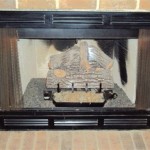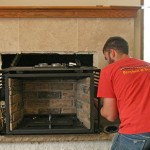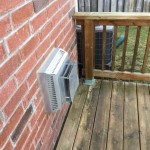```html
Fireplace Wood Insert: Enhancing Efficiency and Aesthetics
A fireplace wood insert is a self-contained heating appliance designed to be installed within an existing masonry or prefabricated fireplace. Unlike traditional open fireplaces, which are notoriously inefficient and often draw more heat from a room than they provide, wood inserts offer a significant upgrade in heating performance and overall efficiency. They function as a closed combustion system, controlling airflow and directing heat into the room instead of up the chimney. This controlled environment allows for more complete combustion of wood, resulting in higher heat output, reduced emissions, and a smaller amount of creosote buildup.
The primary function of a fireplace wood insert is to convert an inefficient fireplace into a powerful and reliable heat source. By utilizing advanced combustion technologies and insulated fireboxes, these inserts maximize the potential of burning wood for heat. This is achieved by carefully controlling the amount of air entering the firebox, optimizing burn rates, and extracting as much heat as possible from the wood before the exhaust gases are released. This increased efficiency can lead to substantial savings on heating costs, especially for homeowners who rely on wood as a primary or secondary heating source.
Beyond their functional benefits, fireplace wood inserts also offer aesthetic improvements. They are available in a wide variety of styles, finishes, and sizes to complement any décor. From traditional cast iron designs to sleek, modern stainless steel models, there is an insert to suit every taste. Many inserts feature large glass doors that provide an unobstructed view of the fire, enhancing the ambiance of the room. Furthermore, the controlled combustion process results in cleaner burning, leading to less smoke and soot, which helps to maintain a cleaner and more pleasant living environment.
Benefits of Installing a Fireplace Wood Insert
The advantages of installing a fireplace wood insert are numerous and can significantly improve the heating capacity and overall performance of a fireplace. These benefits include increased efficiency, reduced emissions, enhanced aesthetics, and improved safety. Each of these aspects contributes to making a fireplace wood insert a worthwhile investment for homeowners seeking a cost-effective and environmentally responsible heating solution.
One of the most significant benefits is the dramatic increase in heating efficiency. Traditional fireplaces typically have an efficiency rating between 5% and 15%, meaning that most of the heat generated by the fire escapes up the chimney. Fireplace wood inserts, on the other hand, often boast efficiency ratings of 60% to 80% or even higher. This improved efficiency translates directly into lower heating bills and a greater ability to heat a home effectively with wood. The controlled combustion process ensures that more of the wood's energy is converted into usable heat, rather than being wasted.
Furthermore, modern fireplace wood inserts are designed to meet stringent emission standards set by the Environmental Protection Agency (EPA). These standards aim to reduce the amount of particulate matter released into the atmosphere during wood burning. EPA-certified inserts utilize advanced combustion technologies, such as catalytic combustors or secondary air injection systems, to burn off pollutants and reduce emissions. This makes wood-burning a more environmentally friendly heating option, contributing to cleaner air quality.
In addition to their functional advantages, fireplace wood inserts also offer aesthetic improvements. They can transform a dated or unattractive fireplace into a focal point of the room. With a wide range of styles, finishes, and door designs available, homeowners can choose an insert that perfectly complements their existing décor. The large glass doors on many inserts provide a clear view of the fire, creating a warm and inviting atmosphere. The controlled burn also helps to keep the glass cleaner, minimizing the need for frequent cleaning.
Finally, fireplace wood inserts enhance safety compared to traditional open fireplaces. The closed combustion system prevents sparks and embers from escaping into the room, reducing the risk of fire hazards. This is particularly important for homes with young children or pets. The insulated firebox also prevents the surrounding masonry from overheating, further reducing the risk of fire. Overall, a fireplace wood insert provides a safer and more controlled heating experience.
Factors to Consider When Choosing a Fireplace Wood Insert
Selecting the right fireplace wood insert involves careful consideration of several factors. These include the size of the fireplace opening, the heating requirements of the space, the desired style and features, and the budget. A thorough assessment of these factors will help ensure that the chosen insert is the right fit for the homeowner's needs and preferences.
The size of the fireplace opening is a crucial factor in determining the appropriate size of the wood insert. The insert must fit snugly within the fireplace opening without overcrowding the space or leaving excessive gaps. Accurate measurements of the fireplace opening are essential to ensure a proper fit. Manufacturers typically provide detailed sizing guidelines for their inserts, specifying the minimum and maximum fireplace dimensions that the insert is designed to accommodate.
The heating requirements of the space are another important consideration. The size and layout of the room or area to be heated will influence the BTU rating of the insert needed. BTU, or British Thermal Unit, is a measure of the heat output of the insert. A larger space will require an insert with a higher BTU rating to effectively heat the area. It is important to consult with a knowledgeable dealer or installer to determine the appropriate BTU rating for the specific heating needs.
The desired style and features of the wood insert will also play a role in the selection process. Factors to consider include the overall aesthetic of the insert, the type of door (single or double, arched or rectangular), the finish (cast iron, steel, or enamel), and any additional features, such as a blower fan or a thermostat. These features can enhance the performance and convenience of the insert, but they may also increase the cost.
Finally, the budget is an important consideration when choosing a fireplace wood insert. The price of inserts can vary widely depending on the size, features, and brand. It is important to set a realistic budget and to compare prices from different dealers. In addition to the cost of the insert itself, it is also necessary to factor in the cost of installation, which can include the installation of a chimney liner and any necessary modifications to the fireplace opening.
Installation and Maintenance of Fireplace Wood Inserts
Proper installation and regular maintenance are essential for ensuring the safe and efficient operation of a fireplace wood insert. Installation should always be performed by a qualified professional to ensure that the insert is properly connected to the chimney and that all safety regulations are followed. Regular maintenance, such as cleaning the chimney and inspecting the insert for damage, will help to prolong its lifespan and maintain its performance.
The installation of a fireplace wood insert typically involves several steps. First, the fireplace opening must be thoroughly cleaned and inspected to ensure that it is structurally sound. Next, a chimney liner is installed to protect the existing chimney from the corrosive effects of wood smoke. The liner also helps to improve the draft and prevent creosote buildup. The insert is then carefully positioned within the fireplace opening and connected to the chimney liner. Finally, the insert is tested to ensure that it is functioning properly.
Regular chimney cleaning is crucial for preventing chimney fires and maintaining the efficiency of the wood insert. Creosote, a flammable substance that is formed during the combustion of wood, can build up in the chimney over time. If the creosote buildup becomes excessive, it can ignite and cause a chimney fire. It is recommended to have the chimney inspected and cleaned at least once a year, or more frequently if the insert is used regularly.
In addition to chimney cleaning, regular maintenance of the wood insert itself is also important. This includes inspecting the door gasket for damage, cleaning the glass door, and checking the blower fan (if equipped) for proper operation. The door gasket should be replaced if it is cracked or worn, as this can affect the efficiency of the insert. The glass door can be cleaned with a specialized glass cleaner designed for wood stoves and inserts. The blower fan should be cleaned regularly to remove dust and debris, which can reduce its efficiency.
Furthermore, it is important to burn only dry, seasoned firewood in the wood insert. Wet or unseasoned wood produces more smoke and creosote, which can lead to increased chimney fires and reduced efficiency. Seasoned wood has been air-dried for at least six months, and it typically has a moisture content of less than 20%. By burning dry, seasoned wood, homeowners can maximize the performance of their wood insert and minimize the risk of chimney fires.
```
Quadra Fire Expedition I Wood Insert Fireside Hearth Home

Wood Inserts Fireplace Xtrordinair Made In America

Wood Inserts We Love Fire

Wood Burning Fireplace Inserts 101 Mf Fire

Wood Burning Fireplace Inserts Insert Installation

Ventis Hei240 Wood Burning Insert Rockford Chimney

Wood Inserts Heating Appliances Osburn

T25i Timberwolf Wood Fireplace Insert Hearth Stove Patio

Osburn Everest 2 Zero Clearance Wood Stove Fireplace Fireplaces By Cameron
.aspx?strip=all)
Cost Of Operating A Wood Insert Cord Calculator Regency
Related Posts








